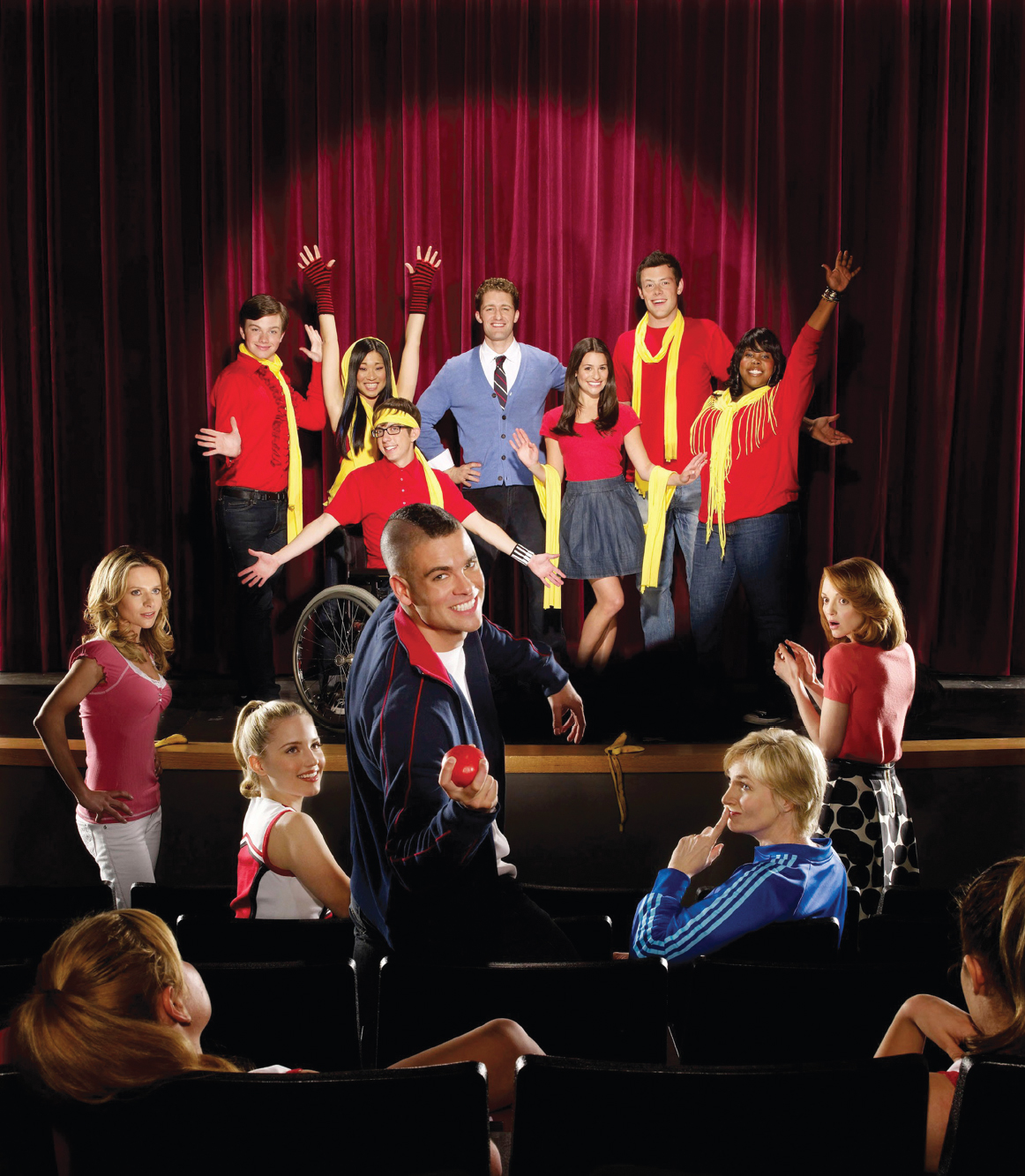5
Communication and Culture

Lighthearted musical numbers aside, Glee takes a serious look at the relationships and communication between individuals of different identities. Matthias Clamer/© Fox Television/Courtesy Everett Collection
If you were trying to imagine a group that clearly reflects the diversity of the United States, it might look a bit like the cast of Glee. At once a scathing satire of high school life and a joyful celebration of music, Glee debuted in May 2009 to rave reviews and an immediate audience following. It was also a charming—and often troubling—exploration of intercultural and co-cultural communication and relationships. The diverse characters conformed to stereotypes in many ways—there was Rachel, the ambitious diva; Kurt, the self-assured and fashionable gay teen; Santana, the mean-spirited cheerleader; and Puck, the insensitive jock. But the show also dealt with real communication issues and challenges in almost every episode, including bullying, teen pregnancy, and death and grief (particularly when Cory Monteith, the actor who played Finn, passed away in 2013). It also explored the way differences in religious beliefs, personal lifestyles, and social status affect group bonding.
After you have finished reading this chapter, you will be able to
- Define and explain culture and its impact on your communication
- Delineate seven ways that cultural variables affect communication
- Describe the communicative power of group affiliations
- Explain key barriers to competent intercultural communication
- Demonstrate behaviors that contribute to intercultural competence
There’s no doubt that individuals from different co-cultures respond well to seeing people like themselves represented on television. But Glee was never a sweet take on multiculturalism: Sue Sylvester, cheerleading coach turned principal, pointed out the differences between team members and openly, viciously mocked them. Her mean-spiritedness not only provided the show with zinging laughs and a definable “bad guy” but also acknowledged the real struggles that teens from just about every co-culture must face. “That’s real life,” noted Kevin McHale, who played Artie. “It’s not like, oh, you need to be sensitive. High school is not always sensitive” (McLean, 2011).
While Sue Sylvester considered the glee club to be the lowest form of high school life, Jane Lynch (the actress who played Sylvester) has a clear sense of why the show’s celebration of misfits struck such a chord. “Glee presents this idealised [sic] world where no matter who you are or how different you are from the ‘norm,’ you’re going to get supported in this glee club,” says Lynch. “And you’re going to be held up as unique, and you’re going to be loved for it” (McLean, 2011).
As episodes of Glee demonstrate, communication among individuals of different races, sexes, religions, and so on can be messy—but it can also be exciting, challenging, enlightening, and enjoyable. To be part of any team, or to be a good neighbor and an informed citizen, you need to understand this essential communication process. Whether you’re looking to learn how to better communicate with your older relatives, understand the way your roommate’s faith plays out in her communication, or contemplate current national debates surrounding issues like immigration, this chapter aims to help you better understand cultural differences and similarities to increase your competence in intercultural encounters. We begin with an overview of culture. Then we explore cultural variations and group affiliations as well as the challenges and opportunities that intercultural communication offers.
